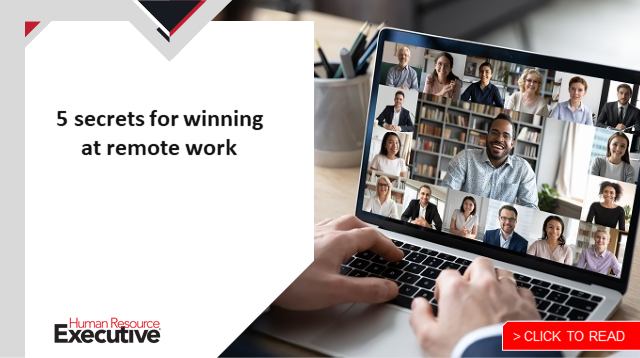As the world of work evolves, our skill sets and to-do lists should too.
The basics of people leadership are never going to change. But the way our employees work and succeed will continue to evolve, so we need to be adaptable. We need to understand our people by building relationships with them. Get to know how they think and feel. Figure out creative ways to live out our company values.
Many of us are well into another year of managing a hybrid workforce, remote employees and everything in between. As you carry forward and more folks return to the office, get ready for a world of complexity.
Nearly 80% of companies are officially hybrid, according to research by Envoy. Most have a “hybrid at-will” policy, meaning that employees can choose which days they come into the office.
I’m a big believer in hybrid work. But this work model can be tricky for people leaders because it gets complex. What we need most as people leaders is space to talk through the issues.
Here are a few challenges I wrestle with most weeks (and I’m not the only one):
- Fostering relationships and building connections among employees in a hybrid world
- Making it clear what type of work people should be focused on in-office versus outside the office
- Introducing fair incentives, benefits and pay across offices and remote locations
The best experience any company can provide starts by gathering people together (ideally two or three times a week) to collaborate, share and problem solve in person. Two years ago, we didn’t need to convince people to come in. It was expected. You worked from work. Now, there needs to be a good reason—and the responsibility of delivering that message falls on us to a certain extent.
Personally, I come in Monday through Thursday because I’m my best self when I’m around others. But I ask my team to come in on Tuesdays and Thursdays for group meetings. I shared my reasoning with the team: Being together helps us build closer-knit communities and a sense of belonging at work.
 We forget that as humans we’re built to engage in person. In one of my team’s recent people meetings, we pulled out the whiteboard. We had a great discussion. The ideas flowed. We built on each other’s thoughts. We veered off-course and took tangents. It was easy to interact, which meant people stayed focused and engaged. We were all having the same in-person experience. I could watch faces for cues and know if someone had something to say—no one had to come off mute to speak. On Zoom, it would have been impossible to follow the conversation.
We forget that as humans we’re built to engage in person. In one of my team’s recent people meetings, we pulled out the whiteboard. We had a great discussion. The ideas flowed. We built on each other’s thoughts. We veered off-course and took tangents. It was easy to interact, which meant people stayed focused and engaged. We were all having the same in-person experience. I could watch faces for cues and know if someone had something to say—no one had to come off mute to speak. On Zoom, it would have been impossible to follow the conversation.
Save high-collaboration activities, like brainstorming new ideas or engaging in collective problem-solving, for days in the office. Encourage teams to come in together for specific meetings. Also, help them distinguish what they can do best together from what they can do when working from home.
Another consideration: For some, coming into the office is shiny and new. But as the veneer wears off, the couch at home will start to look more attractive.
Building a great physical workplace that people love is one of the most important ways to keep people excited and engaged. I have confidence in the physical workplace for many reasons. One of the most compelling is that people crave it, and will continue to gravitate to it. If given the choice, our research found that 66% of office workers would choose to work mostly in-office. Further, 48% say impromptu run-ins and actual face time with colleagues is what excites them when thinking about going into the office. Meanwhile, 47% just want to get out of the house! I can relate.
 So, how do you make coming into the office a habit? Become a cheerleader. Figure out ways to help your teams break up the routine. Schedule lunches together either at the office or nearby. Encourage people to take one-on-one meetings on coffee outings or walks. You’ll want to take advantage of these moments to build connections.
So, how do you make coming into the office a habit? Become a cheerleader. Figure out ways to help your teams break up the routine. Schedule lunches together either at the office or nearby. Encourage people to take one-on-one meetings on coffee outings or walks. You’ll want to take advantage of these moments to build connections.
It all comes down to an engaged workforce. One way to engage is to talk to employees about the work that matters most. Train managers to meet regularly with direct reports to find out what matters most to them and what keeps them engaged in their job. Ask questions like: Are they finding joy in their job? What are the things they want to change? Do they have the resources and support they need to make those changes? If they received a call from a recruiter, would they take it and why?
Managers should be listening carefully and taking notes. If you have an employee engagement platform, have them track these conversations along with next steps. If not, make sure they pass along any insights to HR.
Once you’ve done a few of these sit-downs, you’ll notice trends. Almost always, these conversations surface problems that are within the manager’s control to solve, which may make the difference whether a person stays or leaves.
Finally, defend your employees’ right to work/life blend.
 Work-life blend is about making in-the-moment trade-offs and choices we all face every day. Does work come first right now, or is it family? Do I go into the office on Tuesday and Thursday so I’m free to pick up the kids the rest of the week?
Work-life blend is about making in-the-moment trade-offs and choices we all face every day. Does work come first right now, or is it family? Do I go into the office on Tuesday and Thursday so I’m free to pick up the kids the rest of the week?
When I was at Facebook, there were days I had a deadline, which meant I might not make dinner with my boys. But I never missed that soccer game at 3 in the afternoon. I assessed how I needed to spend my time and made a commitment. Some days, work came first and other days, it was my boys.
The job of a people leader will be to provide a flexible, hybrid work environment so employees can blend work and home life by choosing what’s right for them based on their circumstances. As leaders, we should coach our people to recognize these choices, weigh the potential trade-offs and take advantage of the flexibility they may already have.
As people leaders, we’re called on to make the workplace the best experience it can be because it will influence a person’s time at a company. We need to update our playbooks. Provide hybrid options. Make coming into the office a habit. Encourage in-person collaboration. Talk about what engagement looks like among employees. And be prepared for it to get a little messy.

